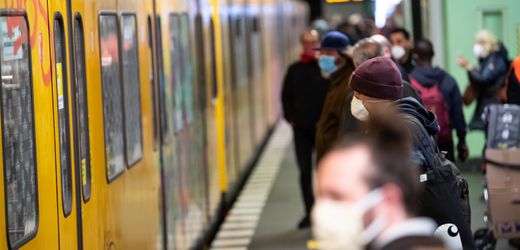
Anyone who commutes by train, which departs in a climate-friendly and is not rewarded financially. The costs have increased in the past years, significantly more than the drivers. This shows an evaluation of the pro-Rail Alliance on the Basis of data from the Federal Statistical office, which is the MIRROR.
Accordingly, the driving paid guests in rail transport in the past year, on average, 16 percent more than in 2015. The car was driven by only four percent more expensive.
“Driving a car is currently favorable compared to the Sixties and seventies, and in spite of CO2Control,” says Wolfgang Maennig, an economist at the University of Hamburg. Overall, was driving a car in the last few years compared to the rail travel has become increasingly affordable.
This price development is contrary to the climate goals of the German government and the European Union. Because the emissions in the transport sector should actually decline – and a key role to play in public transport, they should steal the car market share. So far, they have managed, however, not really to break the dominance of the car – and a greater rise in prices in the railway transport make public transport for drivers less attractive.
The public is regularly more expensive
Thus, a long-term Trend continues. Thus, the price index increased, according to a study by the German Institute for economic research (DIW) in the case of rail transport, from 1991 to 2017 is significantly more than the drivers ‘ price index. The DIW researchers justified this with only a slight increase in fuel prices, while prices in the public passenger increased traffic continuously – and in transport more than in the long-distance transport.
Measured against the price indices for transport services, the prices in the public passenger transport have since the beginning of the nineties, therefore, more than doubled. This was according to the authors, mainly due to the fact that the state wanted to achieve more revenue with the public transport, in order to reduce its deficits. At the same time, it has not many transport companies to work much more productively.
A receipt for urgent political action is required, the managing Director of the German pro-Rail Alliance, Dirk Flege, sees in the Numbers. It was not acceptable, “the cost of climate-friendly transport, increase Rail more than for motorised individual transport”. Anyone opting for an environmentally friendly means of transport, should not be punished financially for such care. The car is depending on your place of residence for many people anyway, the more convenient means of transport, because it provides door-to-door.
Tax reduction in the rail long-distance transport as a model
The pro-Rail Alliance, therefore, urges to free the Railways from the electricity tax and to reduce the EEG-surcharge for electric-powered trains significantly. What are the consequences of tax relief, shows the railway lobby Association, according to a view on the long-distance transport. The prices in 2020 fell by 15.4 percent. This was a result of the 2020 introduced the lower VAT rate of seven per cent in the rail long-distance transport, the the industry to the customers.
An economist would Time make public transport otherwise attractive. You must assign the car to its true cost due to accidents and environmental damage, yet it is often cheaper than rail. “This gap is so large that you can fix it not by one, two cents more per litre and three per cent, cheaper Tickets,” says Maennig. He holds the new year in the introduced CO2Levy, therefore, in principle, is the right approach. Due to the fuel prices rose at the turn of the year, however, only about eight cents per litre, and in spite of the annually increasing CO2-Price cost of a litre of petrol or Diesel, according to the ADAC in the year 2025, probably only 15 to 17 cents more than the end of 2020.
City-toll, or forced ticket as a solution
Thus, the negative environmental consequences arising from the consumption of a Liter of fuel, to be covered, should the cost of a litre of petrol or Diesel, but it’s actually about two euros, calculates Time. This is politically not enforceable. The CO2-Tax alone could not close the Cost gap, also argues the Alliance per Rail managing Director, care. In addition, the Federal government had decided in parallel with an increase in the Commuter tax, this car will stay to drive the price attractive.
Economist Maennig therefore proposes that supplementary measures to the CO2Control, for example, a City-toll revenue in public transport flow – there is also another Option: “Anyone who allows a car, you must buy an annual subscription for the local transport in it,” said Maennig.
This Ticket would benefit the motorist, even if you hate public transport, so the Economist. “One has paid for, the marginal costs are thus equal to zero – this makes most of the people are defiant and take the train.” This would require all motorists, but you get to see more of you in the train “and expensive at the same time to drive the car”.


